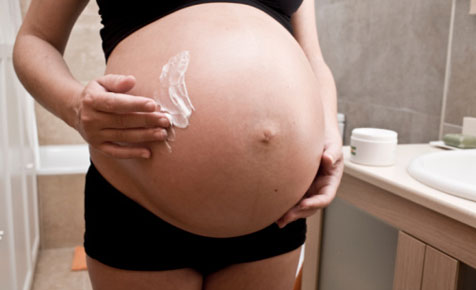The options of VBAC and repeat Caesarean hold certain risks for complications. The main health complication that is possible for women planning a VBAC is the risk of the previous Caesarean scar opening or splitting during labour, known as ‘uterine rupture’, as well as the constant possibility that a repeated Caesarean could become necessary.
Be aware that the following information describes various complications that some readers may find disturbing. You may choose not to read all or parts of this section. This is recommended as a general guide only and should not replace advice from a qualified professional.
There are 2 ways a scar from a previous Caesarean can separate, they are either a complete rupture or a ‘window’ forming, called a ‘dehiscence’. There is also the very rare situation where the uterus can rupture for a woman who has never had a Caesarean, which is important to consider when placing this complication into perspective. All these as well as the signs of rupture are discussed below.
Uterine rupture
Uterine rupture is possible in up to 0.7% of women who have had a previous Caesarean with a uterine scar in the lower segment of their uterus. If you have already had one successful VBAC then the chances of a ruptured uterus are reduced with subsequent vaginal births.
A ruptured uterus is a life threatening complication for the baby, up to 25 to 30% of babies can die (this works out to be about 3 in every 10,000 VBACs). Some babies will survive without problems if a Caesarean is performed rapidly enough (within 15 to 20 minutes). Others can suffer brain damage.
In rare cases a uterine rupture can also be life threatening for the mother, due to shock from excessive blood loss (or haemorrhage), but the most likely complication is that up to 30% of women will need to have a hysterectomy (removal of their uterus).
Uterine rupture is more likely to happen during the labour, but there is also a slight chance it can happen in the last few weeks of the pregnancy.
If the uterus does rupture it will mean an emergency operation under a general anaesthetic, (the woman being made asleep) because this is the quickest way. It may also mean a blood transfusion for the mother, due to possible internal haemorrhaging.
Uterine dehiscence
This is where the scar thins and slightly separates but causes no symptoms. It is often referred to as the formation of a ‘window’. The chance of this happening is about 0.7%, similar to uterine rupture.
Uterine dehiscence rarely causes any problems with the vast majority left untreated to heal on their own. These have been noted by surgeons, when performing a routine repeat Caesarean, and can be present in the final weeks of a pregnancy. There is now a growing trend to ultrasound the lower uterus towards the end of the pregnancy to look for such separations before planning a VBAC.
Uterine rupture with no scar
Women planning a VBAC are not the only ones at risk for rupturing their uterus. While it is a very rare complication (about 0.07%) it is also possible for a woman without a scar in her uterus to experience a rupture. The complication is often associated with the use of medications to stimulate labour when inducing or augmenting contractions, especially if it is the woman’s second or subsequent pregnancy.
Signs of uterine rupture
The main sign of uterine rupture is fetal distress (in up to 80% of cases). This is usually shown by an abnormally low fetal heart rate. Other common signs are excessive vaginal bleeding, (although most of the bleeding can tend to be internal), the woman appears pale and sweaty (or ‘shocked’), has low blood pressure and a fast pulse. The uterus stops contracting (if she is in labour) and sometimes (but not always) the woman can experience abdominal pain.
If the baby’s head is ‘on view’, being seen at the entrance of the vagina, it can suddenly recede right back up into the uterus. Sometimes the woman’s abdomen will bulge as the baby leaves the uterus and enters the mother’s abdominal cavity.
In the past, abdominal pain and ‘scar tenderness’ were the presumed ‘text book’ signs to look for by caregivers. They are now regarded as less significant, being old fashioned, unreliable signs of uterine rupture. In reality, many women will normally feel pain in this area during their labour because of their cervix dilating. Looking for scar tenderness usually only causes them unnecessary concern when all is actually normal.
There have been many documented cases of emergency Caesareans being performed due to ‘scar pain’ only to find after starting the operation that the scar was actually intact.







Leave A Comment
You must be logged in to post a comment.